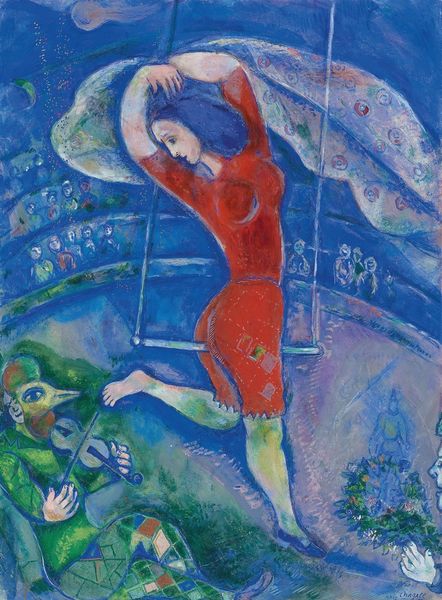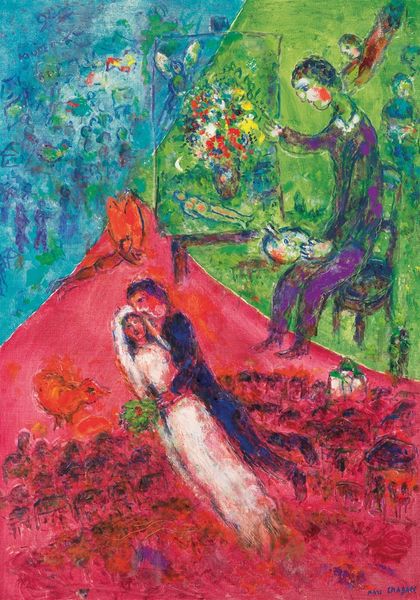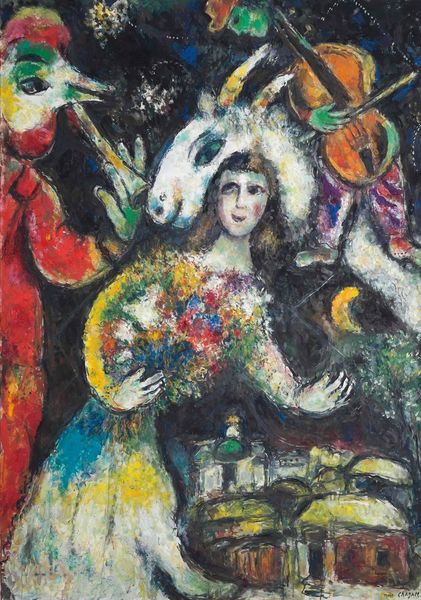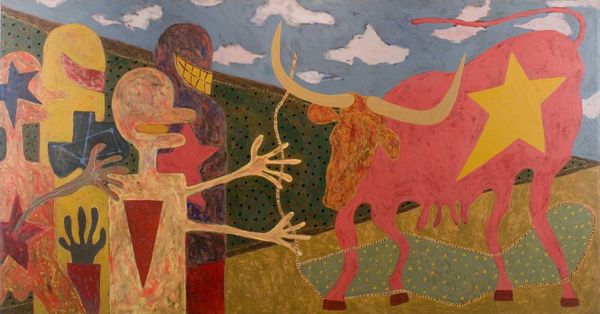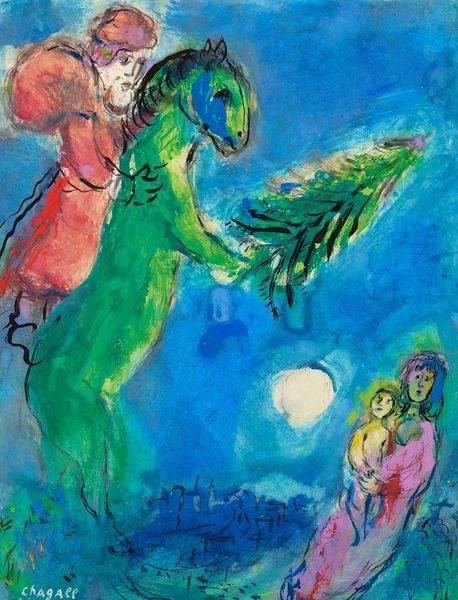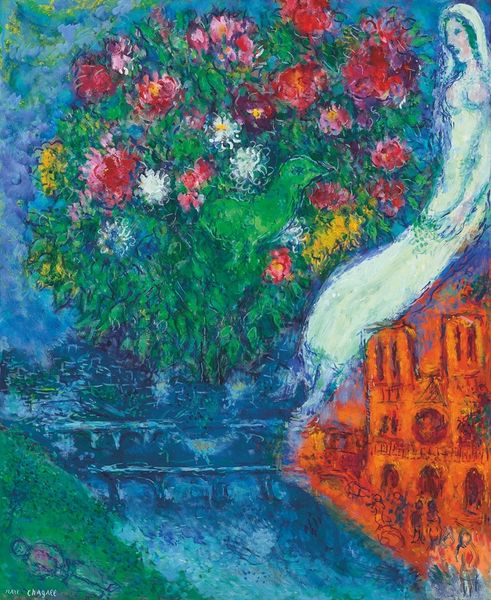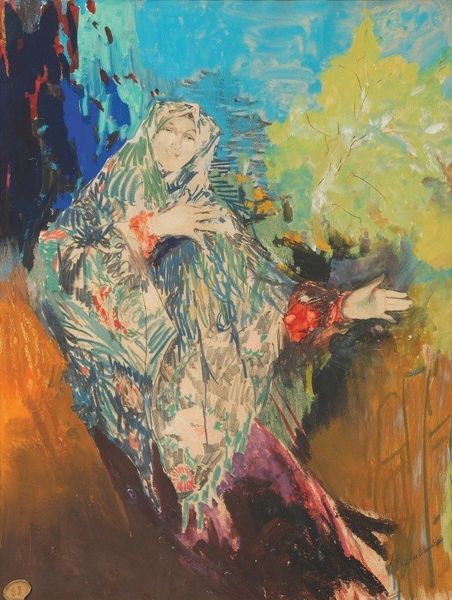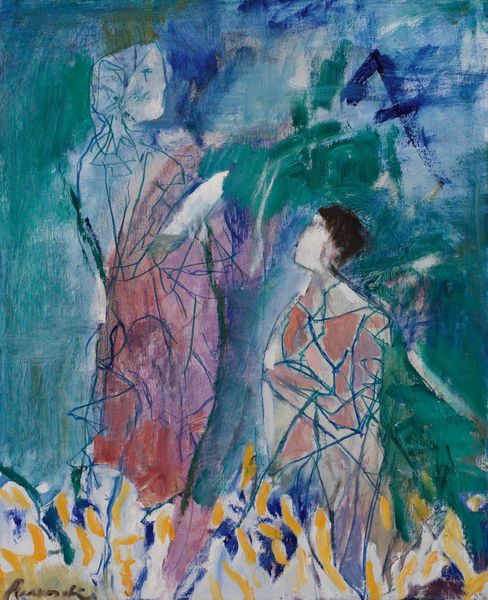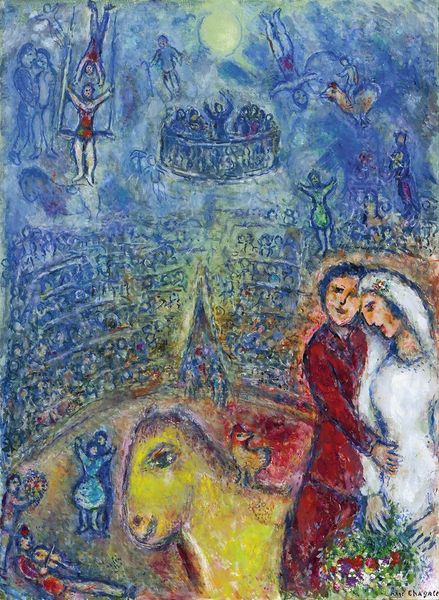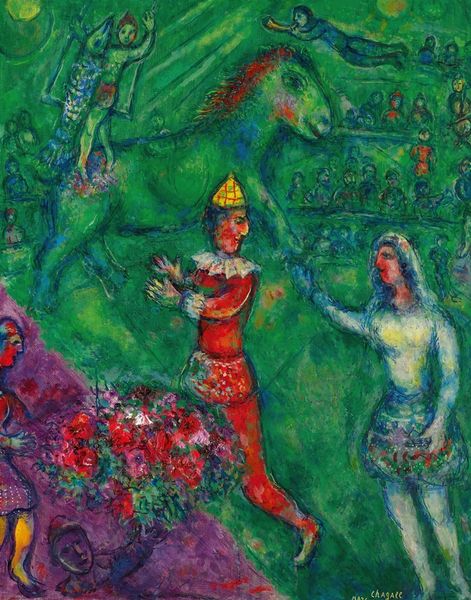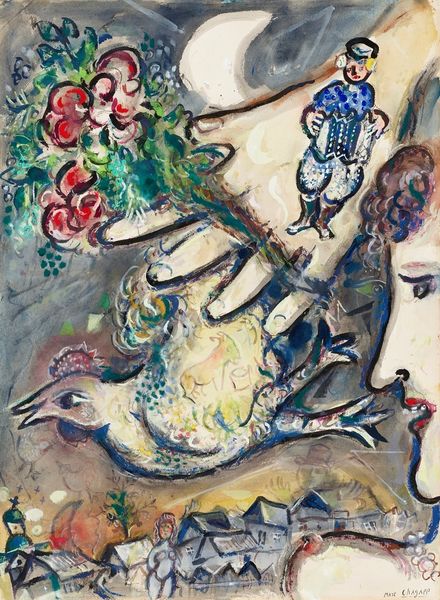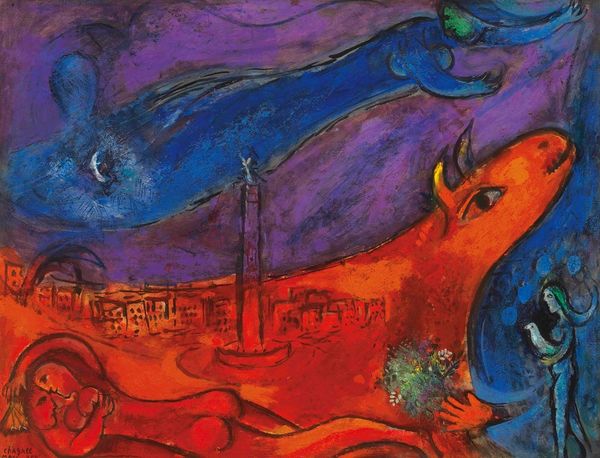
Copyright: Modern Artists: Artvee
Curator: Let's turn our attention to "Les trois cierges," or "The Three Candles," an oil painting completed by Marc Chagall in 1939. It's an intriguing blend of figuration, landscape, and elements we might call naive art. What catches your eye immediately? Editor: The weightless quality is what gets me. The figures, the townscape, even the flames of those titular candles…everything seems to be floating, almost as if dreaming. It’s beautiful but also unsettling. Curator: Indeed, it has a dreamlike aura. Notice the couple embracing—they seem to float above a landscape dotted with the familiar motifs of Chagall's work: angels, musicians, village scenes, and yes, the ever-present candles, anchoring the scene, so to speak. Editor: Those candles…they feel ancient, almost ritualistic. The flames could easily represent faith, hope, love. It feels deeply symbolic. Are there similar examples of symbolic candle use within Russian Jewish communities, in, say, similar paintings or artifacts? Curator: You're onto something significant. In many cultures, including the Jewish traditions so integral to Chagall's identity, candles often symbolize remembrance, spirituality, and even the soul. He uses the motif often. And look closely—are those flowers or snow falling behind the couple? This ambiguity adds another layer. I wonder, is it celebrating a union or something else entirely? Editor: The unsettling feeling deepens! There’s that harlequin, too. He appears in many of Chagall’s pieces. Doesn't the figure come from commedia dell'arte traditions? Does that indicate performance or some kind of double meaning? Is everything as joyous as it initially appears? Curator: Harlequins are notoriously ambivalent. They're entertainers, but they can also embody melancholy or critique. Consider the historical context: 1939 was the brink of World War II, a time of immense turmoil and threat. The dreamlike weightlessness might represent both escape and anxiety. Editor: Yes, the harlequin feels like a reminder of potential disruption and the loss of innocence on the edge of something horrible. So the painting isn’t just a celebration. It carries the weight of impending doom. Curator: Precisely. Chagall has this unique ability to express both the personal and universal, to fuse joy and sorrow in a single image. It feels almost prophetic, looking back on it now. Editor: Thinking about the work as a harbinger instead of a simple celebration of union makes me wonder how the use of colour and naive figures were used as further elements. Anyway, thank you, that was fascinating. Curator: Agreed, it truly makes us think!
Comments
No comments
Be the first to comment and join the conversation on the ultimate creative platform.
